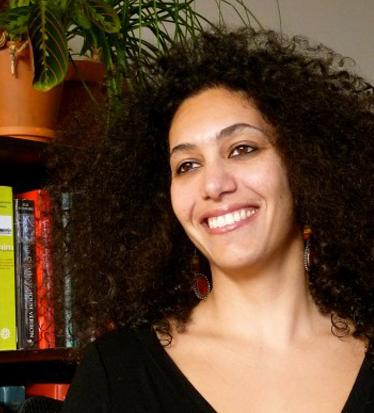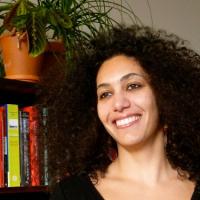
This series features UW doctoral students reflecting on their experiences shadowing faculty at two-year colleges as part of Reimagining the Humanities PhD and Reaching New Publics, a program to develop innovative forms of graduate scholarship and teaching.
I am not a fan of formal education. When I was in first grade, I begged my mother every day not to send me to school. And every day she had to convince me to go. How else would I fill my day? How would I make friends? Every day, I went to school reluctantly. This continued until I finished high school. But it changed when I began my higher education at Santa Fe Community College in Gainesville, Florida. Community college was the perfect place to begin my educational journey. The college was small enough that I quickly learned where things were and what resources were available. The professors cared about my learning and encouraged me to try harder and explore new things. The student body was so diverse that my group of friends included people from Kathmandu, South Carolina, Nova Scotia, Guatemala, El Salvador, Montana, and elsewhere. While at Santa Fe, I watched Eyes on the Prize (1987-1990), a fourteen-part film series about the Civil Rights movement; I listened to all of Malcolm X's speeches; I took ceramics-making and poetry-writing classes. To me, my community college experience was positive, formative, eye-opening, and grounding.
As a Mellon fellow for Reaching New Publics, I am working with and mentored by Gender and Women's Studies instructor Dr. Karen Stuhldreher at North Seattle College. We have taken on the project of ensuring that North Seattle College students who take Gender and Women's Studies courses get as many general and specialized credits transferred to the University of Washington Department of Gender, Women & Sexuality Studies as possible. This process, as one expects, is multifold and involves different departments and offices on both campuses. Some observations I have made thus far about this process: 1. Students transferring credit lose some of their credits because UW finds them either inadequate in level or the materials covered is not comparable. 2. This is important work to be done because 22 percent of UW freshmen are transfer students, and 86 percent of these come from Washington two-year colleges. It is important for these students to be treated equitably the moment they begin their engagement with UW. 3. Faculty on both campuses have to do a lot of work communicating with each other to make sure their departments’ syllabi are comparable for specific credit, e.g., that Gender and Women’s Studies 211 at North transfers as Gender, Women & Sexuality Studies 200 at UW. When I transferred from Santa Fe Community College to the University of Michigan in Ann Arbor, I lost a full year of credits and had to retake Biology 101 in a classroom with 500 other students. The professor was so far away, I would not be able to pick him out in a lineup. I was so overwhelmed by the size of the campus and the classrooms that I did not even know where to start seeking help to get more of my credits transferred. These experiences influence the work I am doing with Stuhldreher to support credit transfer for transfer students.
I also shadow Stuhldreher in her classes and meetings to learn new skills for teaching and navigating this academic space. For instance, I attended her ten credit course “Beginnings: Connecting Learning, Identity, and Culture,” which she co-teaches with Dr. Terry Chung from English. The course brings together literature and theory to examine the different ways hierarchies of power manifest themselves in structuring our values and identities. The course also strengthens academic skills such as reading, writing, and critical thinking. A unique aspect of Stuhldreher and Chung’s course is that it is “designed for students new to college or returning after a long absence” and provides students with the tools that are necessary to succeed in college. To this end, students often work together in small groups on specific tasks. The class teaches students skills that many UW students could benefit from gaining, but which are difficult to teach in classes as large as the ones at the UW.
Stuhldreher’s class reminded me again of Santa Fe, where the classes were small, where my relationships with professors and fellow students were organic and unmediated, and where most everyone’s name was remembered. It also made me reflect on my current teaching experience at the UW. As soon as a course begins, its ending comes racing as an avalanche of readings, familiar faces that never quite get fixed with a name, and feedback that is so rushed that I wonder if it is making an impact. In my ideal academic life, I would have a mix of teaching and research, I would remember all my students’ names, and I would spend enough time with my students to effectively evaluate my pedagogy and course planning. Is this dream job to be found at a research institution, as I’ve often thought, or do I have to look—or create it—elsewhere?
alma khasawnih (she/her/hers)
alma khasawnih was a 2017-2018 Mellon Collaborative Fellow for Reaching New Publics. alma researches access to the street in post-colonial and settler-colonial nation-states as a site of understanding and articulating access to citizenship. alma’s research projects examine ephemeral visual culture production (graffiti, murals, and other forms of street/public art) as stand-alone material objects that orient, disorient, and reorient feminist debates on social political-cultural movements within urban geographies and the phenomenology of erasure, co-optation, and resistance.
